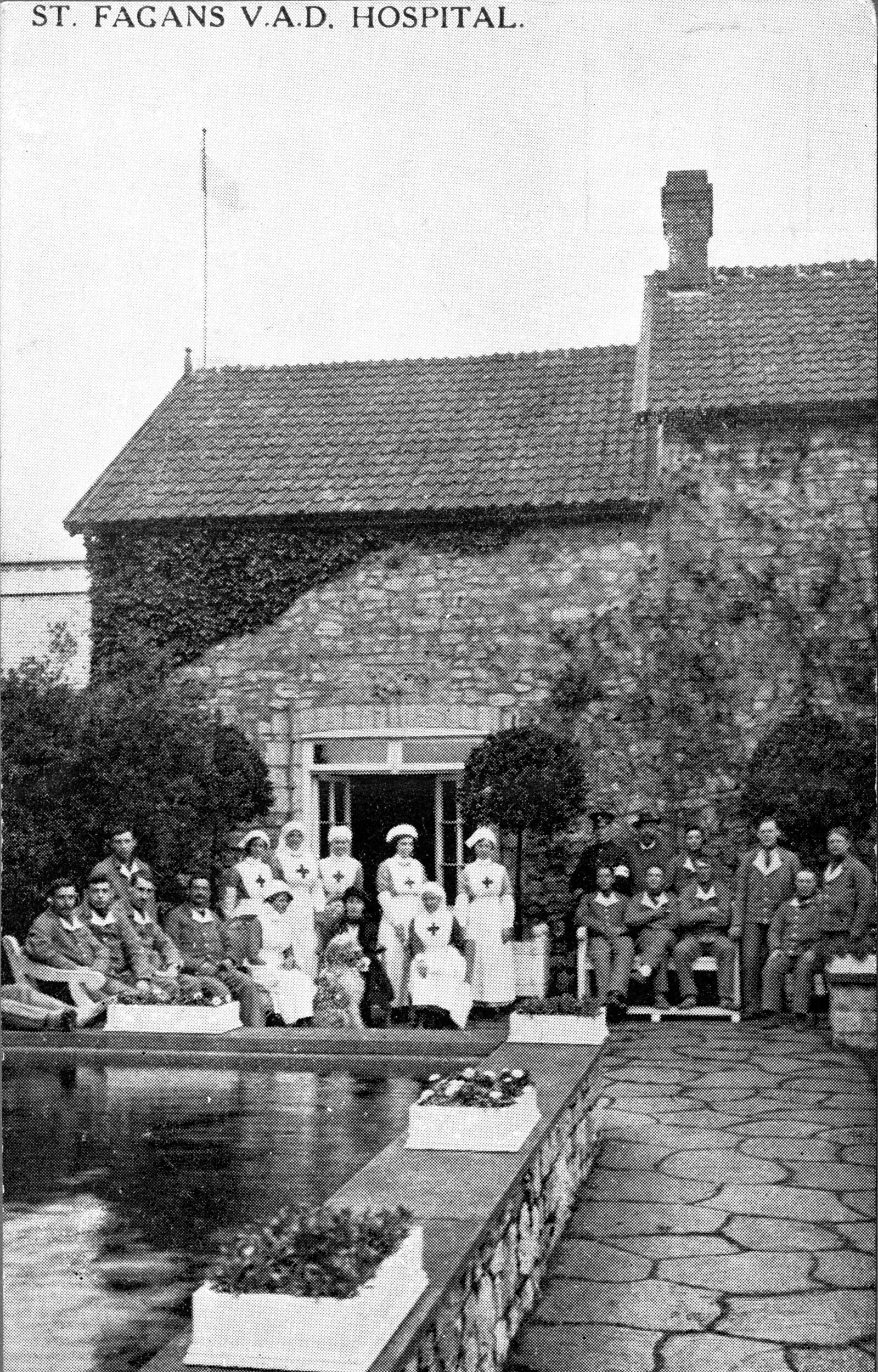Volunteering at St Fagans during the First World War
, 26 May 2015
With Volunteers’ Week fast approaching, many museums and galleries are busy planning events and activities to promote and celebrate the contribution of their volunteers. Here at St Fagans, volunteers play an active role in all aspects of our work. From whitewashing to thatching, rag-rug making to gardening, their skills and dedication are visible across the site.
A hundred years ago, volunteers were leaving their mark on St Fagans under very different circumstances. During the First World War, the British Red Cross opened a 70 bed auxiliary hospital in the grounds of St Fagans Castle, staffed by Voluntary Aid Detachment nurses (known as VADs) from the local area.
The VAD scheme was formed in 1909 by the British Red Cross and the Order of St John, with the intention of providing additional nursing services in the event of war. Detachments (or units) were organised at county level, with each volunteer member receiving training in first aid and basic nursing skills. The first detachment to be established in Wales was formed at St Fagans Castle, of all places, in November 1909. The following year, two hundred VAD members from the county of Glamorgan took over the grounds for a training day. A reporter from the Cardiff Times witnessed the action:
An interesting demonstration was given in a field, showing how the wounded can be carried to the rear for treatment at hospital bases. Dr Sparrow explaining how first aid can be given without special provision of splints, bandages etc. A feature of the demonstration was a spring cart, lent by James Howells and Co Cardiff, which in less than seven minutes can be improvised for twenty-four wounded soldiers under cover. [Cardiff Times 24 September 1910]
Many of the nurses who volunteered at the St Fagans Red Cross Hospital during the war joined the VAD scheme at this early stage. One of whom was Mary Ann Dodd – known as Polly. She worked as a housemaid for the Windsor-Clive family in the Castle, but also did turns of duty at the hospital, as she recalled some 40 years later:
I used to cook and clean and one day a week I did the washing. Those soldiers’ socks were in a state, many had no heels in them at all. The soldiers only laughed and teased us, and when they got better, they tried to help us.
In July, we’ll be exploring some of these personal stories on-site through music and performance. The much-anticipated culmination of the Make an Aria project (in partnership with Music Theatre Wales and the Royal Welsh College of Music & Drama) will give operatic life to the men and women who lived, worked and convalesced at the Castle during the war. The Make an Aria project is a first for the Museum - we don't often experiment with musical interpretation. Book your tickets now! And of course, don't forget about the First World War online catalogue. We’ve created a ‘volunteering’ tag to pull together all the collections relating to voluntary action during the First World War, both here at St Fagans and in communities across Wales.
UPDATE! Free tickets now available for MAKE AN ARIA on 7 July 2015. Experimenting with opera and performance in the grounds of St Fagans Castle. An opportunity not to be missed. See What's On for further details.


